Patchwork, or patchwork - patchwork, which since ancient times has gained great popularity, as it allowed to create voluminous things of unusual appearance from small scraps of fabric. In this technique, large blankets, capes, pillowcases, bedspreads were sewed. Nowadays, in order to achieve the effect of patchwork, not shreds are used, but textile decor that imitates patchwork. Typically, this decor is decorated with interiors in the style of "retro" or "country".
Modern technologies have made it possible to transfer patchwork patterns to ceramics, and now they are decorated not only with fabrics, but also with walls and floors, using patchwork tiles for this. It has a variety of patterns that are applied by digital printing, and can be either two-color or multi-color.
Patterns are applied on both ordinary ceramic and porcelain tiles. By combining different patterns, you can achieve an original effect that resembles pictures from a kaleidoscope. Quite often on sale you can find specially selected kits - they have the same size and different pattern.
Types of patchwork style tiles
Patchwork-style tiles can be either small or large, in which case the pattern on it mimics the layout of smaller patterned tiles. In addition to size, it differs in texture and color. The texture can be roughened or smooth, shiny or matte, porous or with a glaze coating on top. The colors of the drawings are monochrome, containing two, three or more colors.
The most popular graphic black and white, blue and white ornaments, as well as tiles, aged in beige and brown tones. The most popular are the same as on the fabrics: flowers, ornaments, polka dots, cage. There are geometric and abstract patterns in the patchwork.
Combinations
The patchwork provides unlimited combination possibilities for truly exclusive and expressive interiors. Everyone can choose the colors and drawings that are closest to him, but it is much easier to purchase ready-made kits, the assembly of which designers have worked on.
In the event that you want to choose a tile yourself, you must consider the following subtleties:
- all elements must be of equal thickness and have the same edge, it is good if their surface is also processed in one way;
- on tiles there may be various colors and patterns, but they must necessarily be harmoniously combined with each other, for this it is necessary that either the pattern or the color or the style coincide;
- it is easiest to combine monochrome, as well as one where no more than three colors are involved;
- if many different colors and patterns are used in a tile, it can have an irritating and irritating effect on the nervous system, and should be applied dosed.
Style and color
Patchwork style tiles can be used in almost any interior, if you choose the right pattern and color.
Minimalism
Here you can use patchwork tiles of both neutral tones - gray-white, gray-black, and color - in beige, blue tones. Such vivid patterns will bring brightness and homeliness to strict minimalism.
If the whole room is made in monochrom, you can decorate it not only with bright color, but also with one-color or two-color tiles with an imitation of patchwork - the main thing is that these colors coincide with the main colors of the rest of the decoration. In this case, patterns become the main decoration.They can be laid out in such a way as to make up some kind of drawing, or, on the contrary, “broken down” - this will create an additional decorative effect.
The photo shows an example of a monochromatic apron in the kitchen.
Country
In this style, the use of patchwork technique looks most natural. It is permissible to use monochrome ornaments, as well as multicolor patchwork tiles, however, for the kitchen, multicolor ones are often used to complement the artistic image.
Retro
Patchwork is a historical tradition, so the patchwork is great for decorating interiors in retro style. As a rule, patchwork tiles are selected with a pattern that gives the impression of a half-worn or slightly faded one.
Other styles
The Dutch tradition of ceramics in white and blue tones, which came to Russia and was developed in Gzhel, is perfect for both the country style and the Scandinavian style. White-blue range gives the cladding lightness and airiness, due to which it can also be used in Mediterranean, Provencal and classic styles.
Photo in the interior
Patterned patchwork tiles are used in all the same places as usual - these are the rooms of the bathroom and toilet, an apron in the kitchen, floor coverings in the kitchen, hallway, on the balcony, in the entrance area.
As a rule, “patchwork rugs” are laid out on the floor from such tiles, a similar solution can be found both in the kitchen and in the bathroom. This makes it possible to highlight a particular functional area, for example, the dining room in the kitchen, the shower area in the bathroom or the entrance area in the hallway.
Patchwork tile design in the bathroom
For the interior of the bathroom, tiles in gray tones will look great. Then the interior will be restrained and concise. If you want to add expression, then you can add bright accents.
Photo of kitchen with patchwork tiles
When decorating the kitchen, this type of finish can be used as zoning. Also often patchwork tiles are used as decorative elements on the wall or for flooring.
In the photo there is a combined kitchen floor partially finished with monochromatic patchwork tiles.
In the photo an apron for the kitchen is made of tiles in the style of patchwork.
Examples of use in the kitchen-living room
It is appropriate to place a patchwork tile on the wall - it will become the main decorative accent of the living room, or it will highlight the dining area.
Patterned patchwork blends perfectly with regular, smooth and plain tiles. By combining them, you can avoid excessive variegation in the interior. Keep in mind that patchwork is an active and vibrant pattern; if there is too much of it, it will attract all the attention and may break the geometry of the room. From a large number of such patterns begins to ripple in the eyes, so you need to use them very carefully.

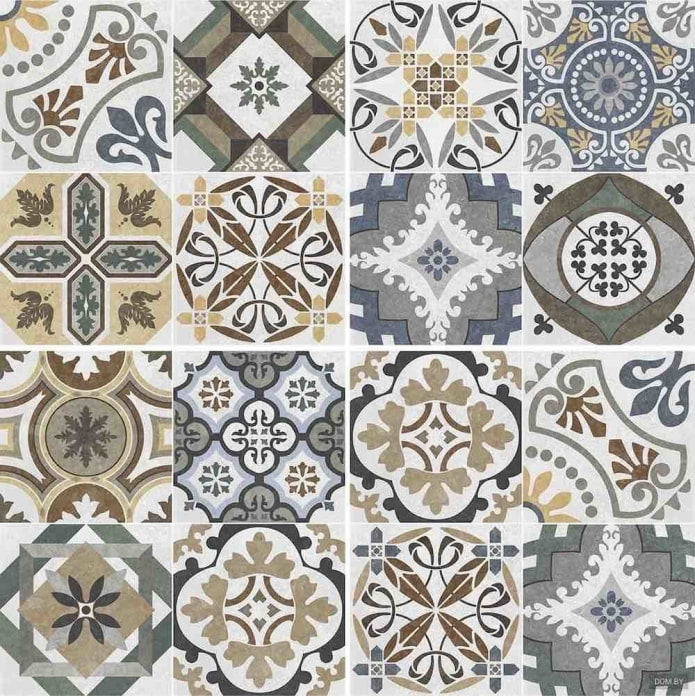
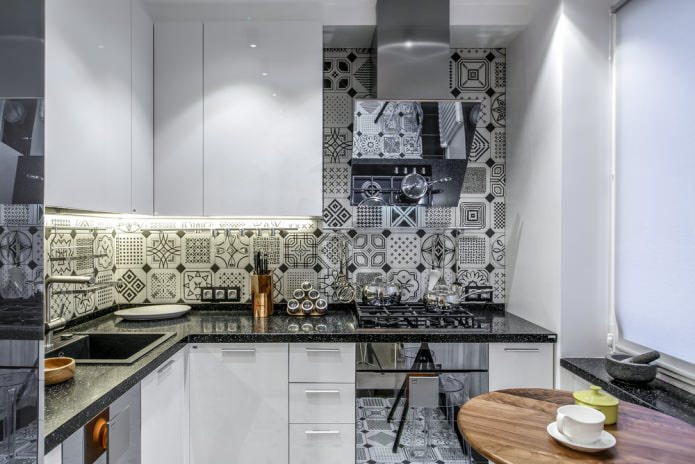

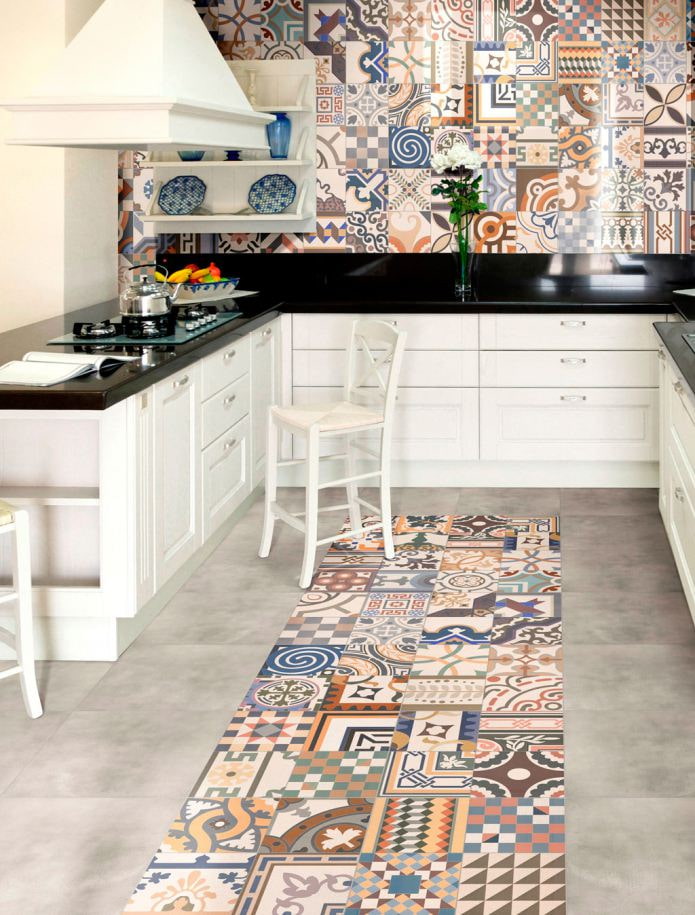

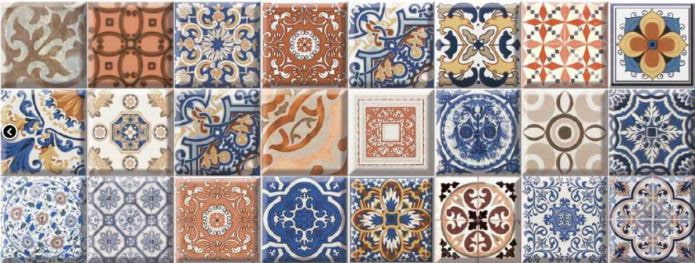

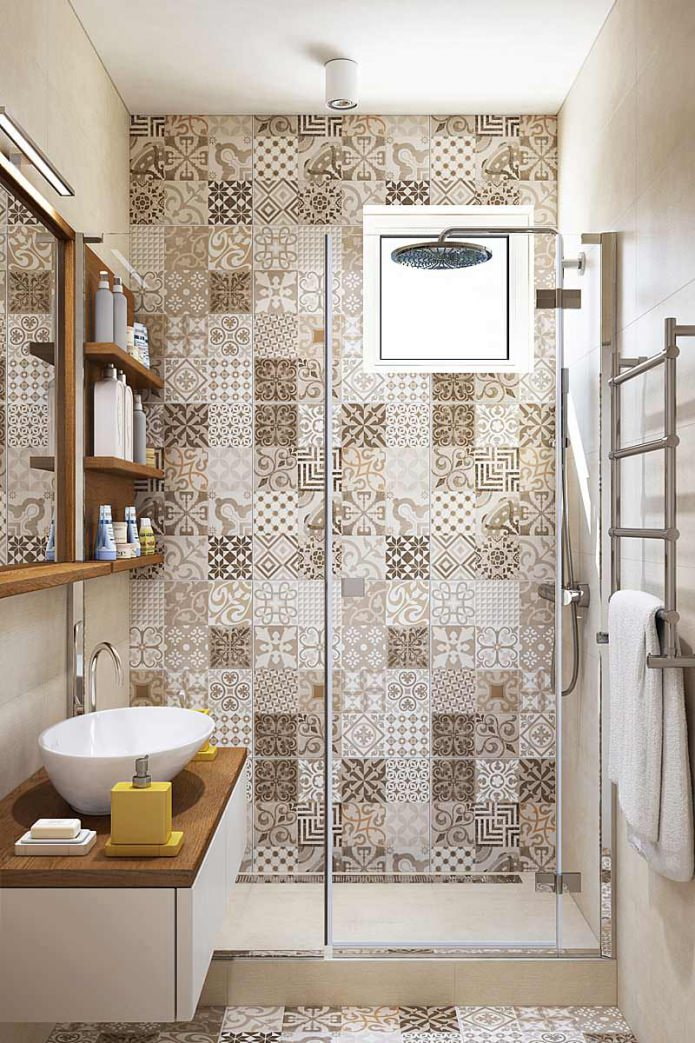
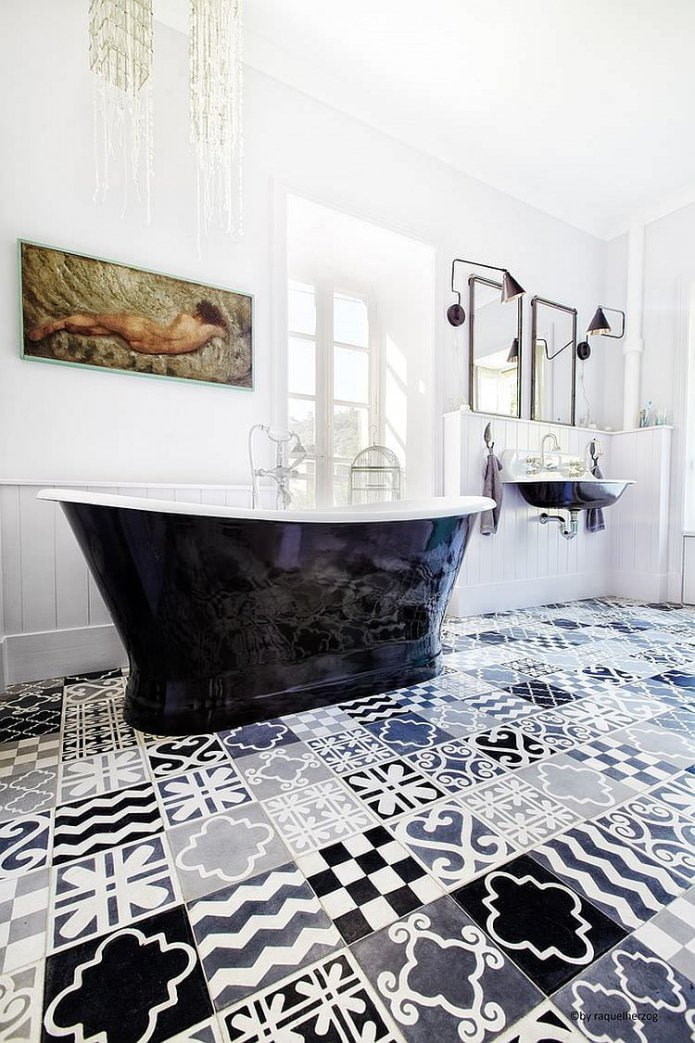
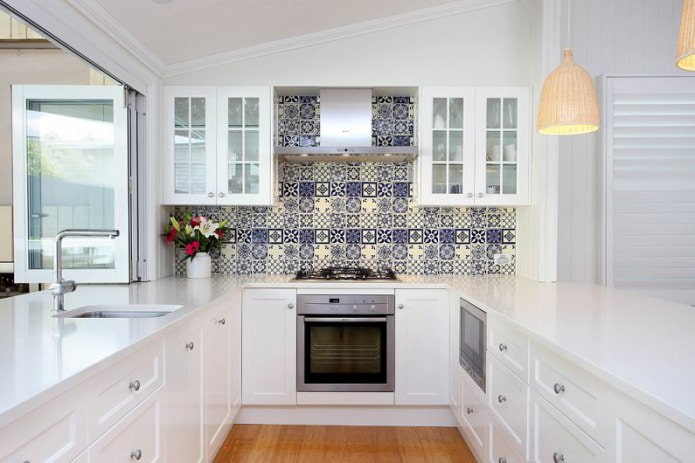
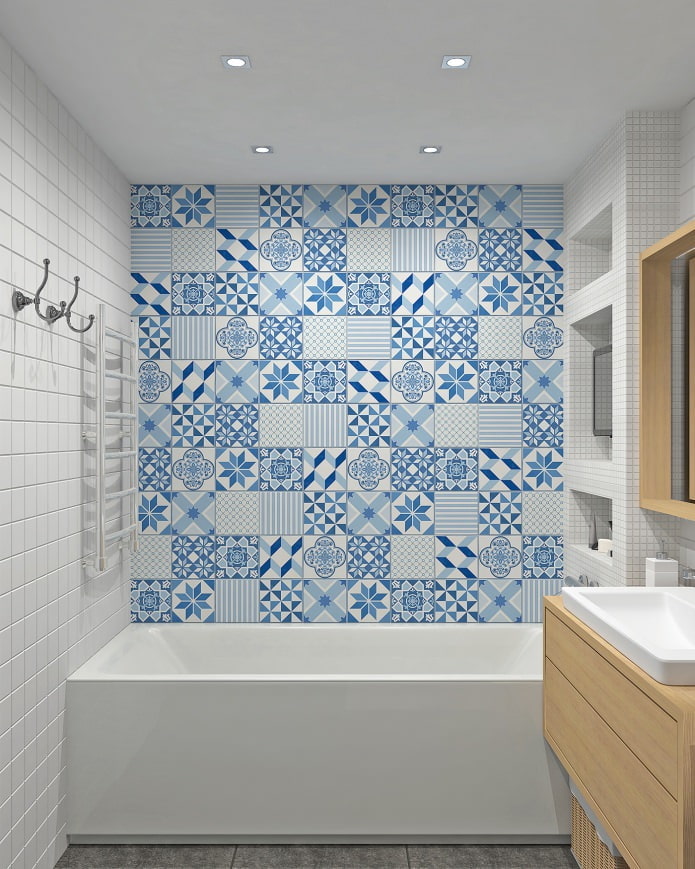
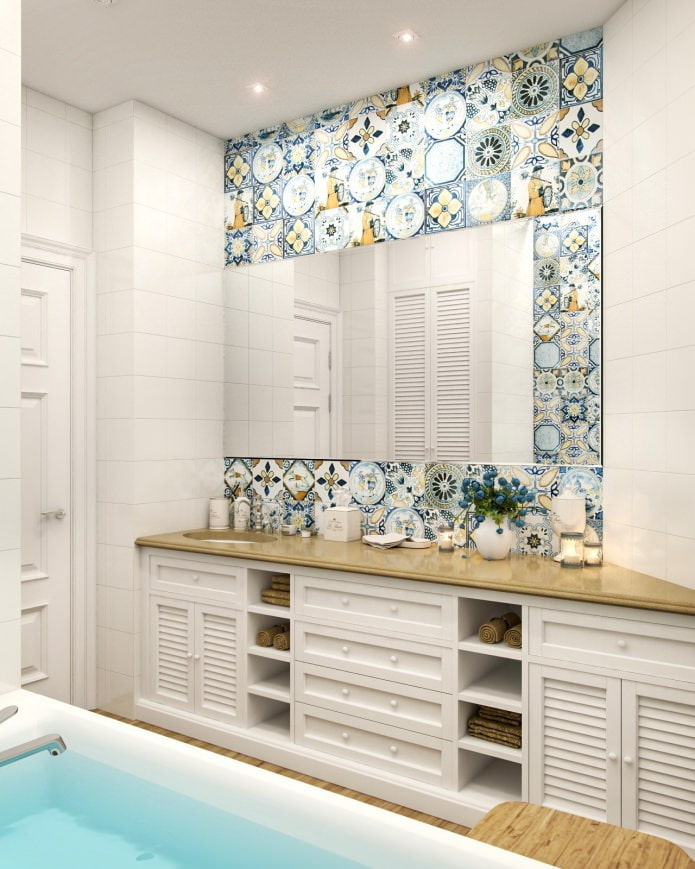
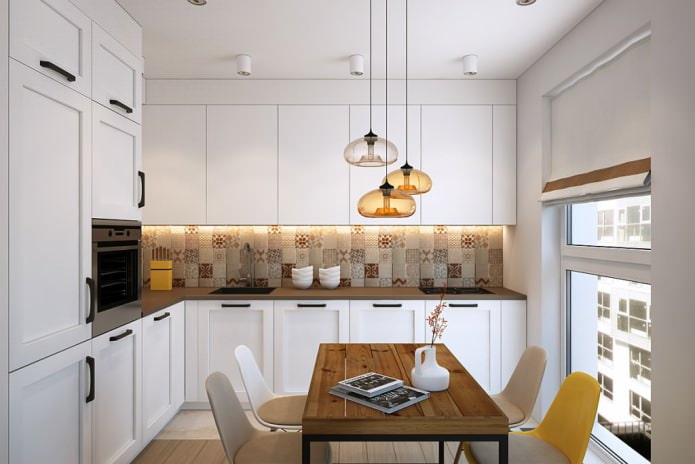
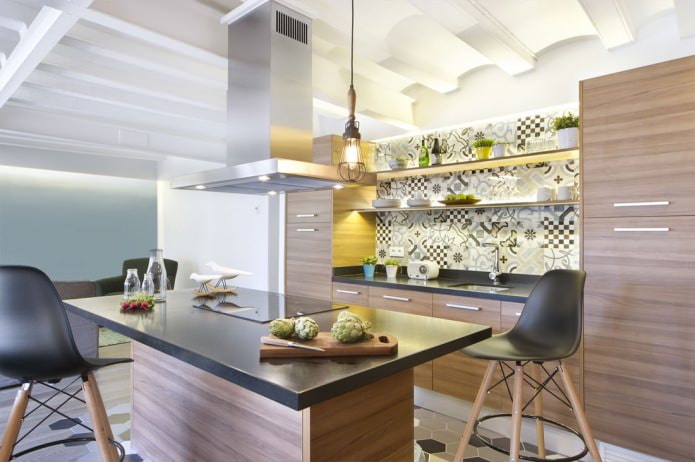


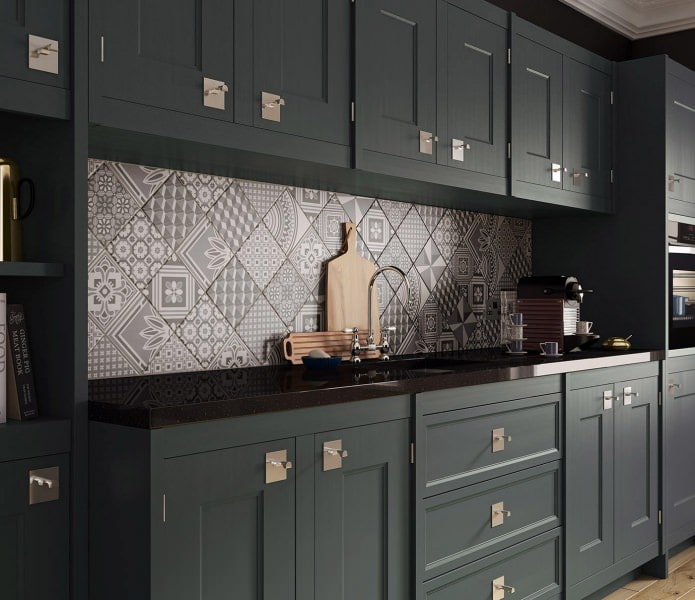
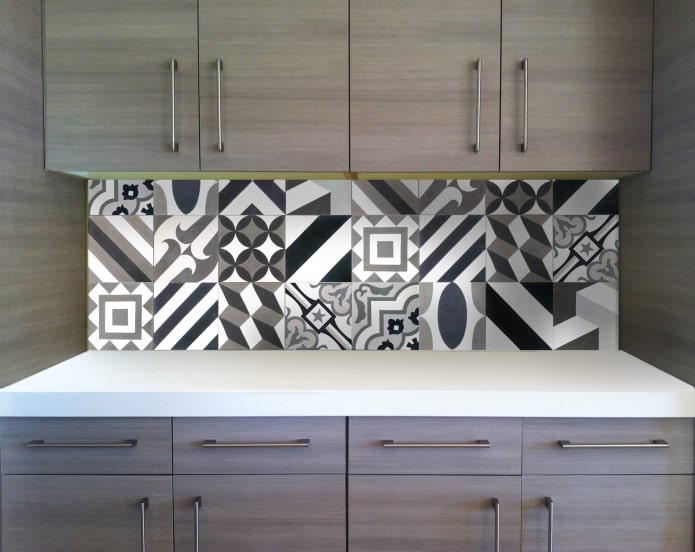
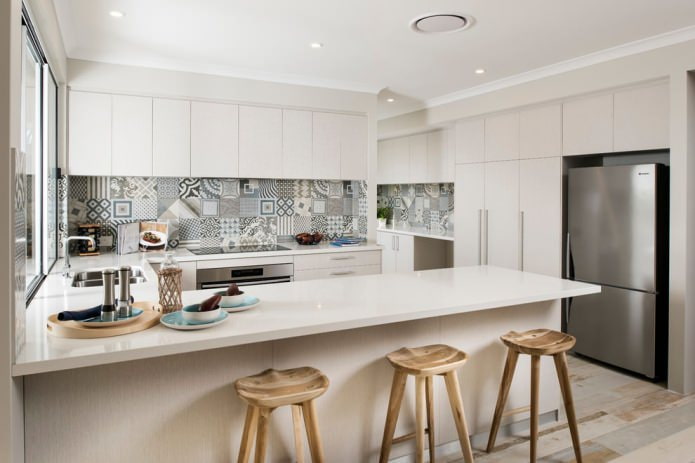
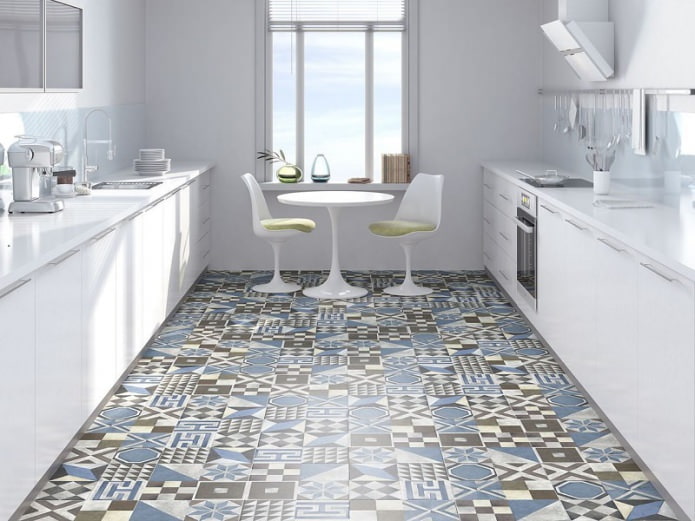
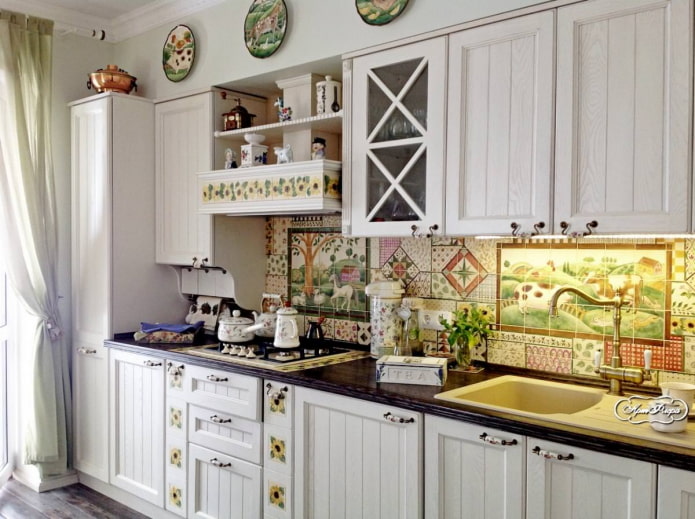
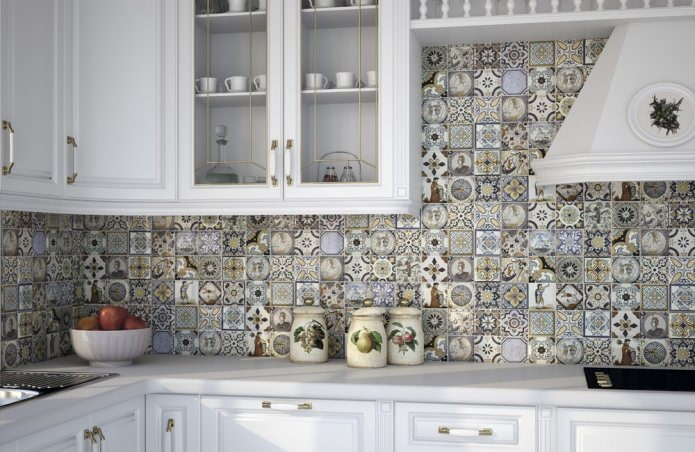
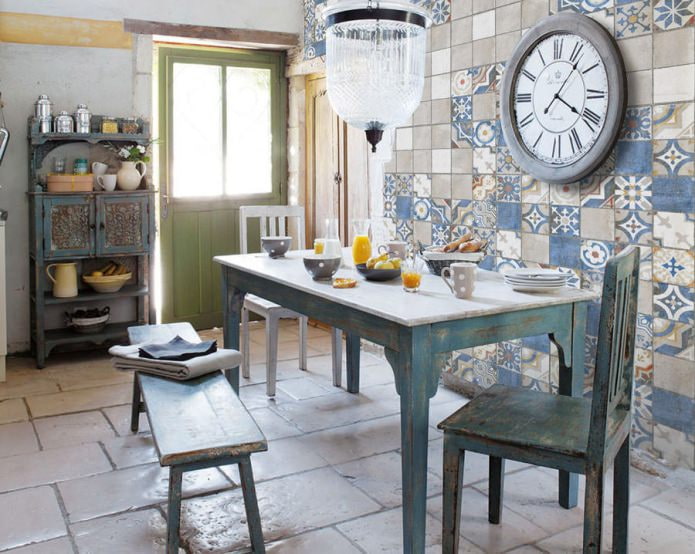

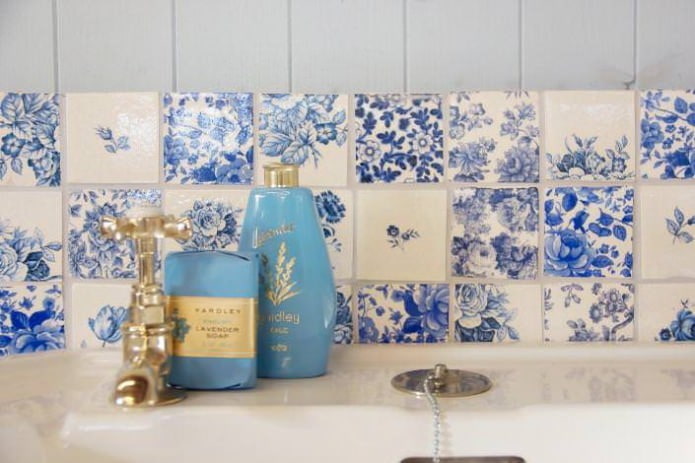
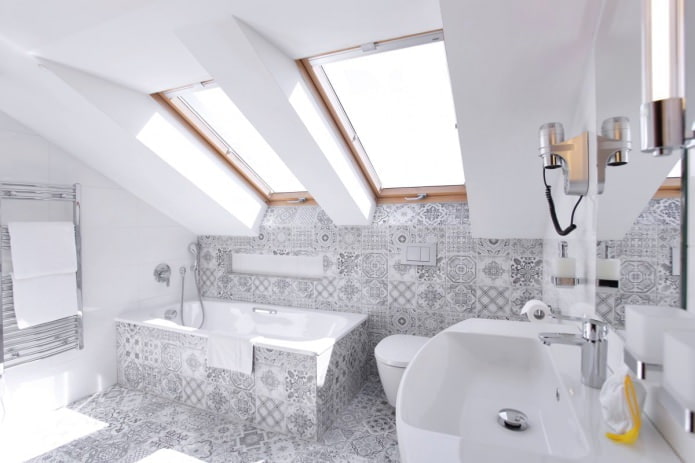
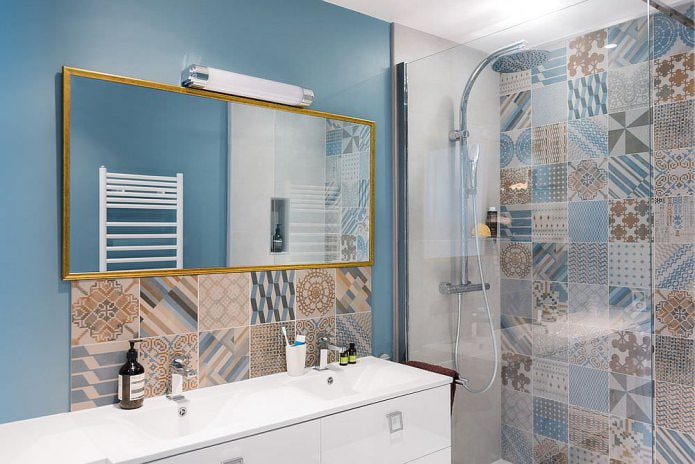
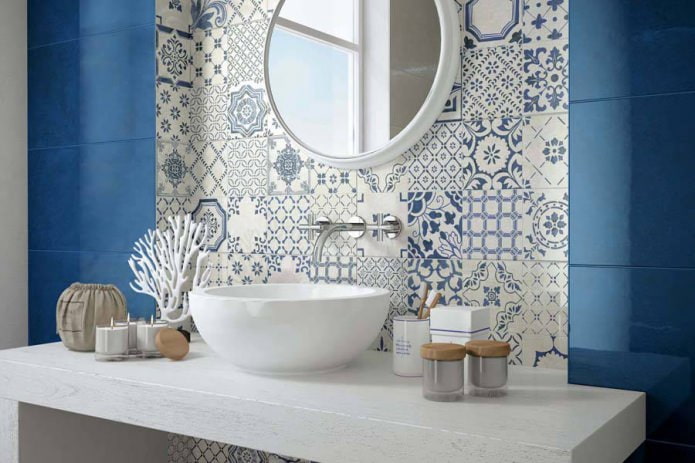

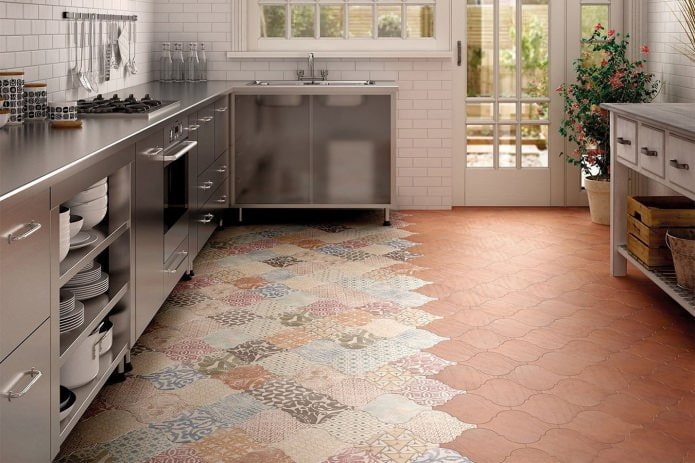
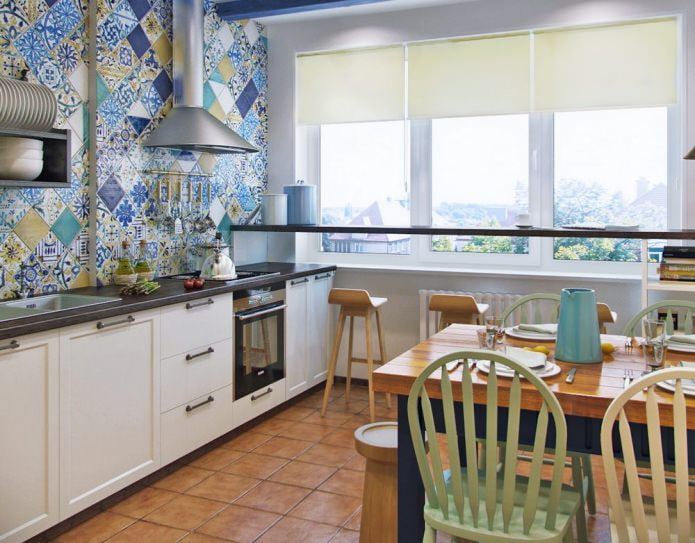
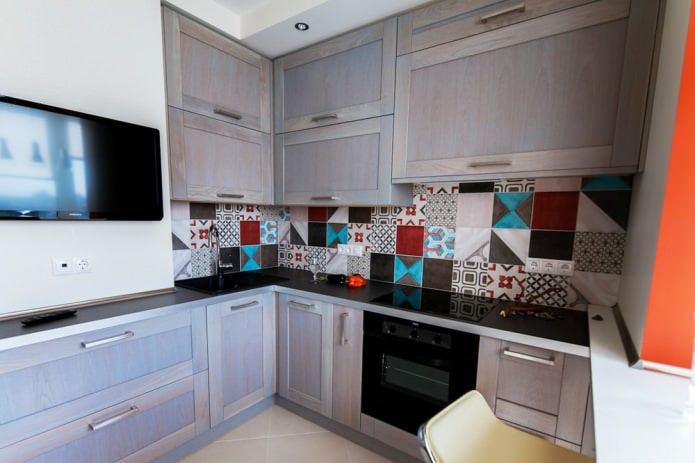
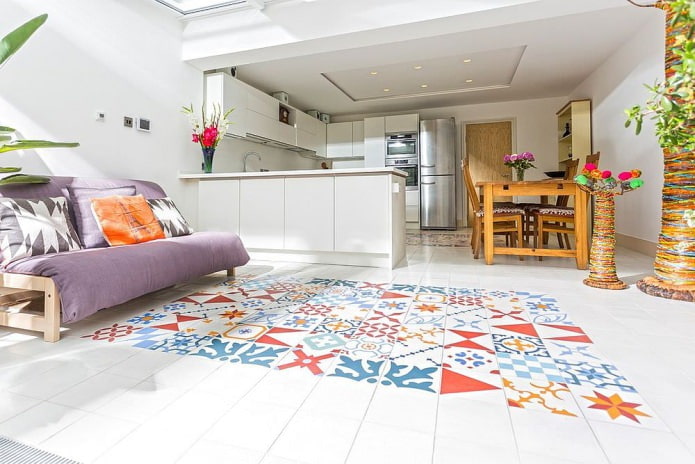
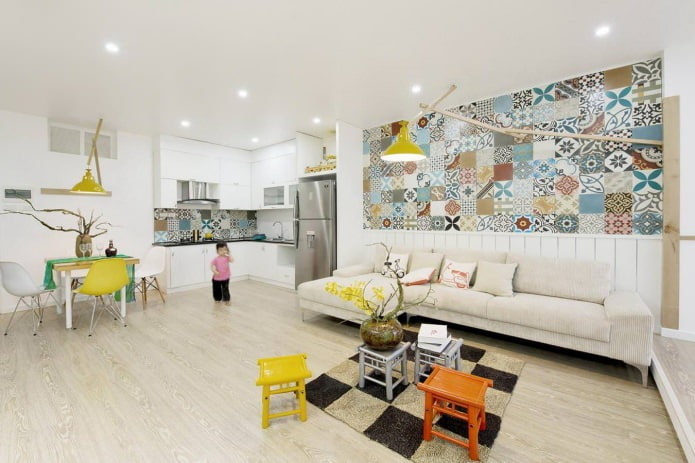
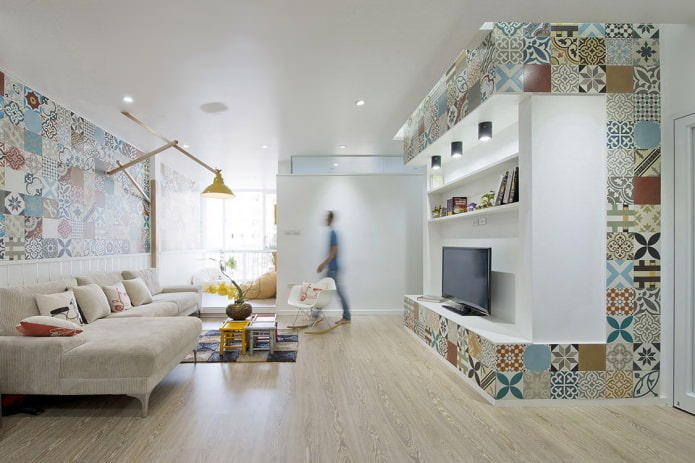
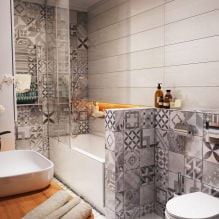
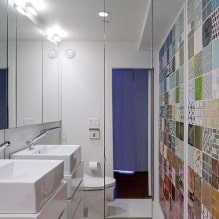
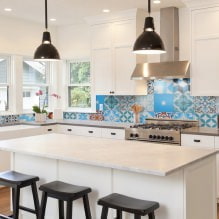
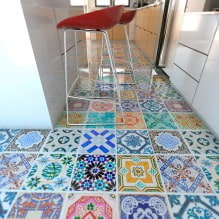

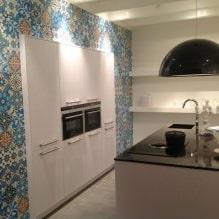
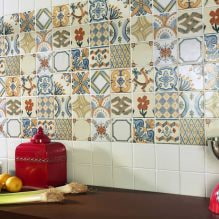
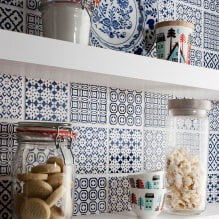
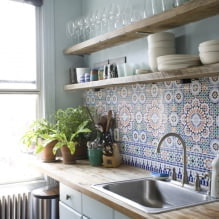
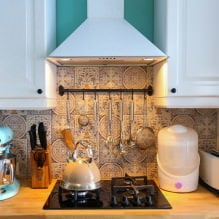
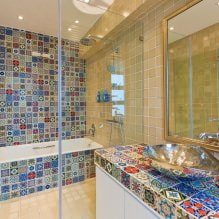
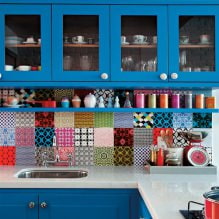
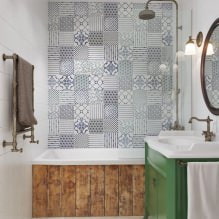
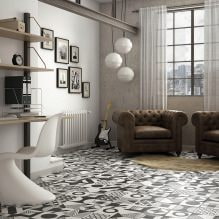
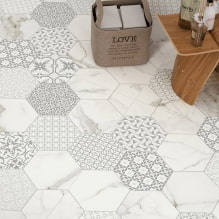

 Top 10 Trends in Interior Design 2020
Top 10 Trends in Interior Design 2020 Rating of cheap TVs with Smart-TV
Rating of cheap TVs with Smart-TV New Year's LED garlands on AliExpress - we disassemble while it is hot so that the house is bright
New Year's LED garlands on AliExpress - we disassemble while it is hot so that the house is bright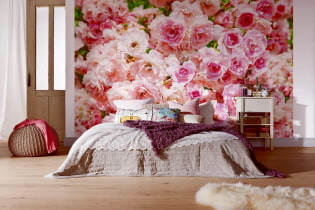 Wall mural with flowers in the interior: living wall decor in your apartment
Wall mural with flowers in the interior: living wall decor in your apartment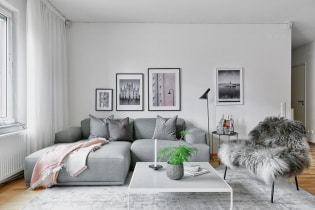 Gray sofa in the interior: views, photos, design, combination with wallpaper, curtains, decor
Gray sofa in the interior: views, photos, design, combination with wallpaper, curtains, decor Interior in peach tones: meaning, combination, choice of finishes, furniture, curtains and decor
Interior in peach tones: meaning, combination, choice of finishes, furniture, curtains and decor